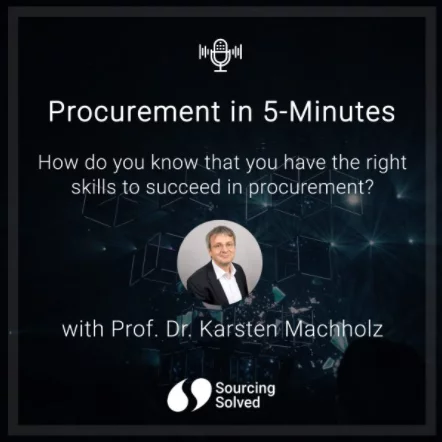Many years ago, when I started my career in Procurement in the mid-eighties of the last century, Category Management was a hot thing. In the days before personal computers and mobile phones getting sufficient information about the supply base was a difficult task. Trade associations, exhibitions, supplier visits, in-person seminars and trainings, etc. were the source of information and it was up to Procurement to extract the right business intelligence (as it is called today) to shape a category strategy.
Most supplier relationships were simple – supply and demand were the market forces. Scale and scope were the negotiation tools of choice for Procurement staff, who organized themselves in main-user councils and purchasing alliances.
It might seem like not much has changed since those days. Often Category Management resulting in strategies are still on vogue and many Procurement departments still define themselves as the masters of price, scale, and scope. Their key performance indicator still is the amount of savings delivered.
But this could not be further from the truth.
The End of Traditional Category Management
The Mission of Procurement traditionally was focused on “purchasing materials and items of the right specifications and quality, at the right time, in the right quantity, from the right source and at the right price”. This was old fashioned Procurement thinking, capturing only a small part of the value chain without much complexity: Procurement was a mere support function managing tactical and operational tasks.
By moving into Category Management, Procurement started to implement strategic thinking to develop world class category strategies and deliver value that extended beyond savings.
The focus shifted to collaborating with key stakeholders, establishing situational analysis’ and overviews, and delivering enterprise-wide category strategies. The implementation of those, however, did not always go smoothly.
Sitting at the crossroads of internal and external information Procurement now needs to evolve from being just a business partner focused on classic category management. It needs to develop into a powerhouse of information and start thinking and executing BEYOND category management to be much better aligned with the core business.
The Future Role of Procurement
Triggered in the past, supplier relationships were intensified and moved up to true partnerships. Today’s supplier relationships spread across various levels of complexity, touching more and more parts of the value chain. More complex supplier relationship models imply various value chain constellations. The entire ecosystem must be taken into consideration to include all aspects of procuring with purpose.
In the current business environment, namely the ongoing digitalization, Industry 4.0, IoT and most recently C-19, Procurement needs to further mature and take on a new, even more strategic role where it is involved in and impacts major parts of the value chain. Procurement should be a sought-after business partner, supplying business insight and business foresight.
We have been taught to think in linear terms but now we need to leave the linear path and start to think in exponential terms to shape the future of Procurement. We must ask ourselves where an approach of 10x Procurement will lead us.
It is apparent that the traditional category management approach is not sufficient anymore and will not deliver on the business partners’ requirements:
Category Management is history, Value Chain Orchestration is the new norm.

As a Value Chain Orchestrator, Procurement takes advantage of its unique position in the ecosystem as a spider in a complex web, applying the entire suite of digitalization, data analytics, robotics, and automation to contribute to the success of the entire enterprise. It develops beyond category management towards the primary provider of business insight and foresight and as such having a huge impact on the value chain.
The Complexity of Supplier Relationships and the growing Impact of Procurement
A major contributor to the elevated role of Procurement as Value Chain Orchestrator is the growing complexity of supplier relationships. The role of suppliers has changed and can lead to various -often in parallel occurring- value chain constellations.
Over time suppliers moved up the value chain and became partners. Joint innovation and development programs were started based on trust and a shared vision. Suppliers became customers, relationships intensified and became more demanding. Joint Go-to-Market initiatives were launched and tested the concept of true partnership.
Another example for the growing complexity is an environment in which suppliers act as competitors as well.
In tomorrow’s even more disruptive environment where parameters change so rapidly that business foresight and insight is required, partners support the development of new business models. The C-19 pandemic has shown that enormous changes in consumer demand and huge shifts in distribution channels have resulted in supply and quality risks and, therefore, require the full engagement of Procurement and collaboration of the extended supplier ecosystem.
In a constantly changing environment the concept of co-opetition is reality, the concept of balancing cooperation, and competition. The straightforward value chain constellation, where suppliers play only one role, is the exception. More frequently different value chain constellations occur at the same time and in parallel requiring Procurement to take on a larger role. This new role opens promising opportunities to apply extended value levers, evolving from bottom-line savings to top-line growth impact.

This graph visualizes the growing role and impact of Procurement. Whilst Procurement’s impact on the value chain in the traditional role is rather limited it grows dramatically with increased complexity of supplier relationships.
To conclude, the traditional role of Procurement is obsolete – Procurement will become the Value Chain Orchestrator.
To be equipped for the new role, Procurement needs an end-to-end digitalization of strategic activities. Specifically, full connectivity with all relevant nodes in the ecosystem, i.e., becoming the internal and external spider in the web. It also demands more intuitive collaborative workflows, remote and virtual orchestration of all relevant stakeholders in the ecosystem, and finally artificial intelligence/advanced analytics capabilities to cope with the data avalanche flooding the Procurement sweet spot.






